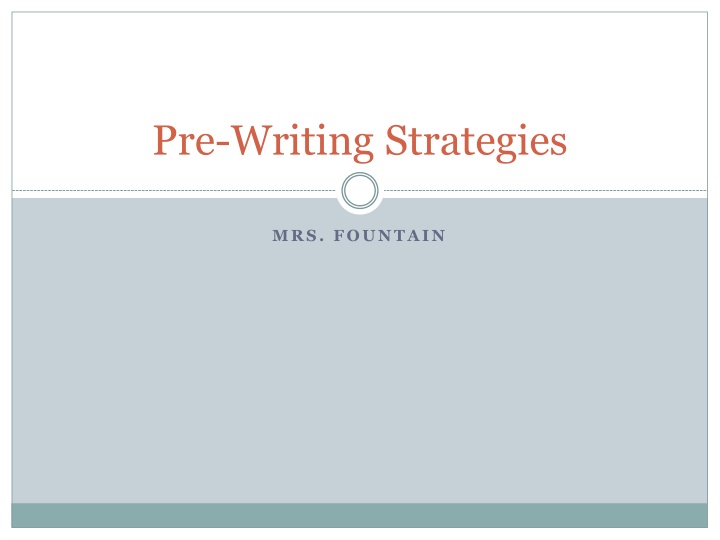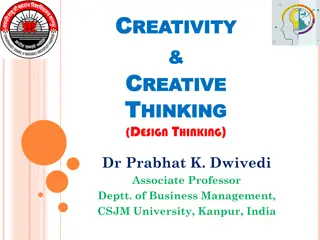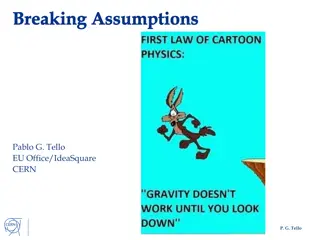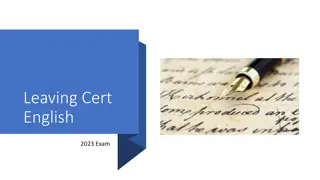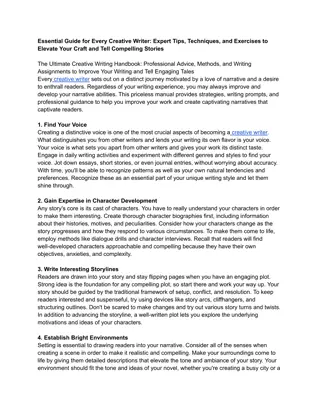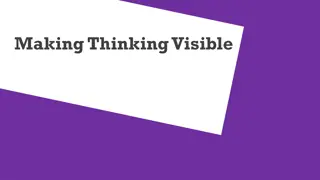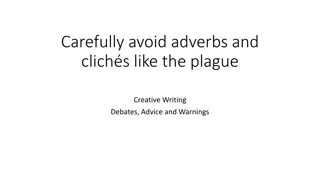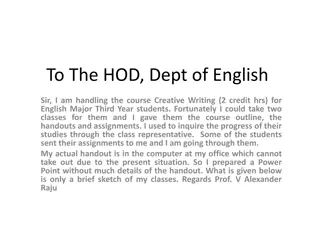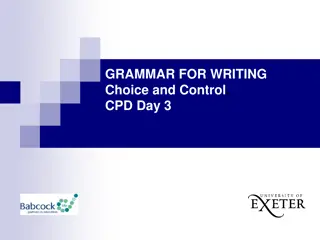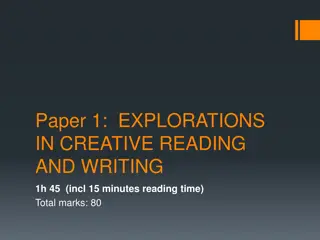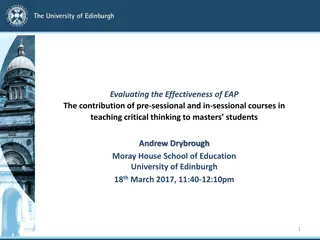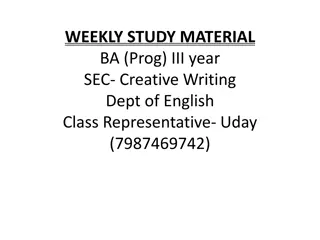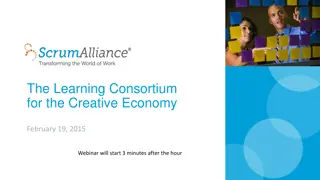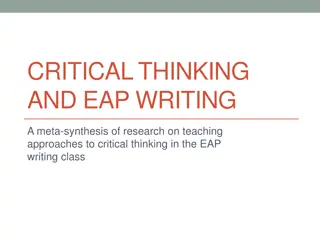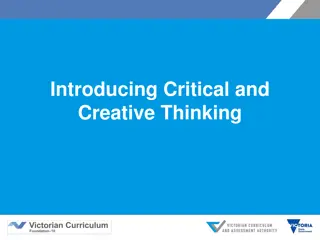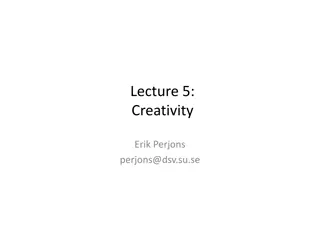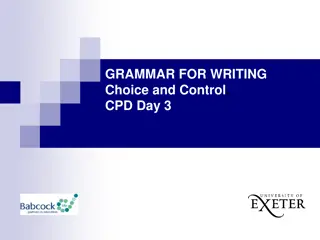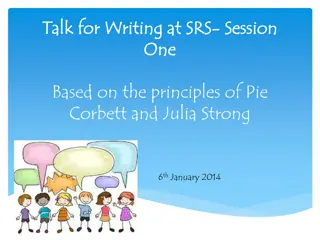Effective Pre-Writing Strategies for Creative Thinking
Implementing effective pre-writing strategies such as freewriting, brainstorming, questioning, and clustering can facilitate the generation of ideas and enhance the writing process. These strategies can be employed at various stages to explore, refine, and structure thoughts before diving into writing, ultimately boosting creativity and clarity in communication.
Download Presentation

Please find below an Image/Link to download the presentation.
The content on the website is provided AS IS for your information and personal use only. It may not be sold, licensed, or shared on other websites without obtaining consent from the author.If you encounter any issues during the download, it is possible that the publisher has removed the file from their server.
You are allowed to download the files provided on this website for personal or commercial use, subject to the condition that they are used lawfully. All files are the property of their respective owners.
The content on the website is provided AS IS for your information and personal use only. It may not be sold, licensed, or shared on other websites without obtaining consent from the author.
E N D
Presentation Transcript
Pre-Writing Strategies MRS. FOUNTAIN
Exploring Strategies After you determine your topic, audience, and purpose, try some exploring strategies also known as prewriting strategies to help get your ideas flowing. The four most common strategies are freewriting, brainstorming, questioning, and clustering.
When to Use Pre-Writing Strategies You can use pre-writing strategies at any stage of the writing process. To find a topic To narrow a broad topic To generate ideas about your topic To generate supporting details
Freewriting Freewriting is writing for a limited period of time without stopping. The point is to record the first thoughts that come to time. If you have no ideas, you can indicate that fact in a sentence such as I don t know what to write. As you write, do not be concerned with your grammar or spelling.
Brainstorming Brainstorming is like freewriting except that you create a list of ideas, and you can take the time to stop and think when you create your list. As you think about the topic, write down words or phrases that come to mind.
Questioning Another way to generate ideas about a topic is to ask yourself a series of questions and write responses to them. One common way to do this is to ask yourself who, what, when, where, why, and how questions.
Clustering Clustering is like drawing a word map; ideas are arranged in a visual image. To begin, write your topic in the middle of the page and draw a box or a circle around it. That idea will lead to another, so write the second idea, and draw a line connecting it to your topic. Keep writing, circling, and connecting ideas until you have groups or clusters of them on your page.
